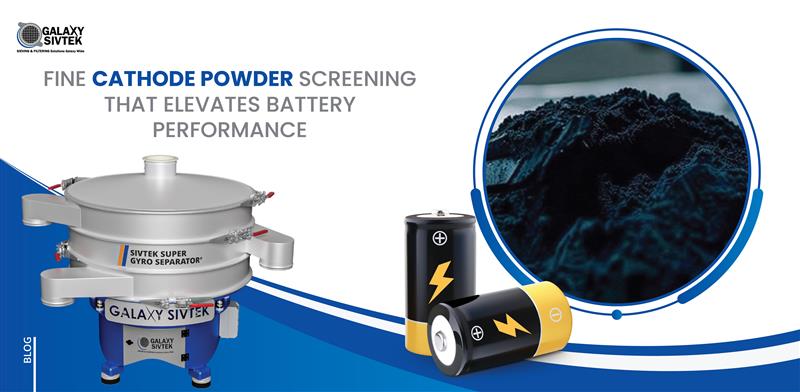
Committed To Quality, Committed To You
In the current competitive landscape of battery manufacturing quality, the cathode powders we work with today like LFP (Lithium Iron Phosphate), NMC (Nickel-Manganese-Cobalt), NCA (Nickel-Cobalt-Aluminium) and LCO (Lithium Cobalt Oxide), can be a major factor affecting the performance, life and safety of an overall cell. There is a definite need for the whole process to be tightly monitored from the raw mix to the final coated electrode, quite the opposite is the case with powder screening though it is often totally ignored. Screening may sound mundane, yet it lays the foundation for consistent slurries, uniform coatings and reliable cells.
The process starts with mixing metal oxides and lithium compounds in a well-thought-out cathode blend. The blend is calcined at a high temperature to produce the active material for a cathode. After its calcination the material is customarily in lump or chunk form and must be ground to fine powder. During milling, challenges arise hard agglomerates, oversize particles, inconsistent particle size distribution (PSD) and stray contamination.
This is where screening takes centre stage. After milling, the powder passes through a screening machine such as the SIVTEK SUPER GYRO SEPARATOR® to perform two vital functions:
The SIVTEK SUPER GYRO SEPARATOR® is specifically designed for high efficiency screening, and its gyratory motion has higher vibration amplitude and material distribution than a regular screener or sieve. This means it gives you faster throughput, a finer mesh (even down to 25 microns), and better control over the powder quality.
Here’s how screening influences the downstream process:
Thus, by the time the screened cathode powder enters slurry preparation and coating, you are working with a more stable, predictable feed material one that sets the stage for high-quality battery production.
The transformation of a raw cathode material mix into a coated electrode sheet entails several stages, yet powder screening emerges as a crucial process. With the SIVTEK SUPER GYRO SEPARATOR® and similar machinery, manufacturers not only get to control the particle size, but also to reduce contamination and increase throughput significantly These gains translate into stable slurries, superior coatings and better-performing batteries. In short: effective screening of cathode powders is not optional it’s foundational to premium battery manufacturing.
